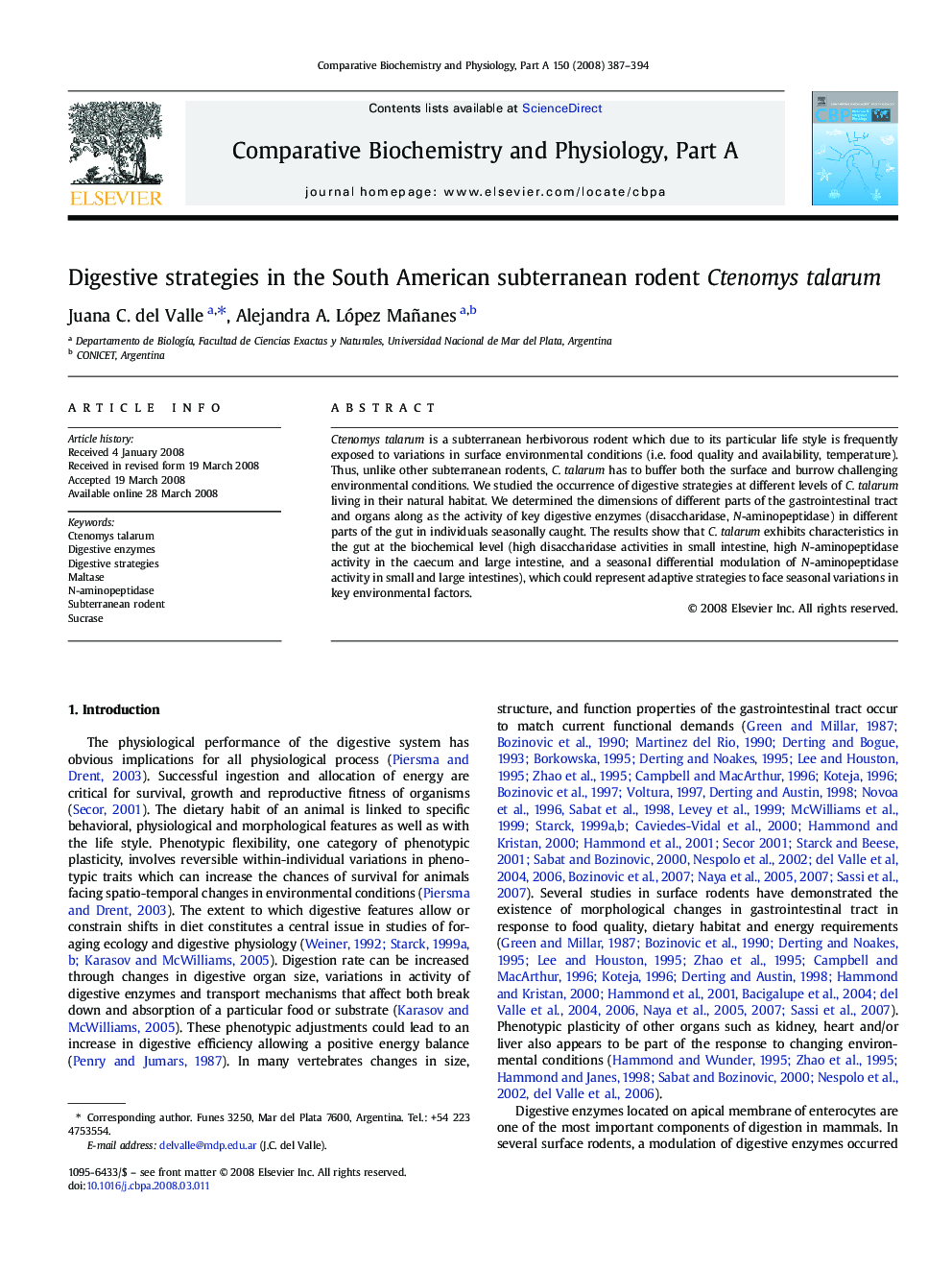| Article ID | Journal | Published Year | Pages | File Type |
|---|---|---|---|---|
| 1973999 | Comparative Biochemistry and Physiology Part A: Molecular & Integrative Physiology | 2008 | 8 Pages |
Abstract
Ctenomys talarum is a subterranean herbivorous rodent which due to its particular life style is frequently exposed to variations in surface environmental conditions (i.e. food quality and availability, temperature). Thus, unlike other subterranean rodents, C. talarum has to buffer both the surface and burrow challenging environmental conditions. We studied the occurrence of digestive strategies at different levels of C. talarum living in their natural habitat. We determined the dimensions of different parts of the gastrointestinal tract and organs along as the activity of key digestive enzymes (disaccharidase, N-aminopeptidase) in different parts of the gut in individuals seasonally caught. The results show that C. talarum exhibits characteristics in the gut at the biochemical level (high disaccharidase activities in small intestine, high N-aminopeptidase activity in the caecum and large intestine, and a seasonal differential modulation of N-aminopeptidase activity in small and large intestines), which could represent adaptive strategies to face seasonal variations in key environmental factors.
Related Topics
Life Sciences
Biochemistry, Genetics and Molecular Biology
Biochemistry
Authors
Juana C. del Valle, Alejandra A. López Mañanes,
